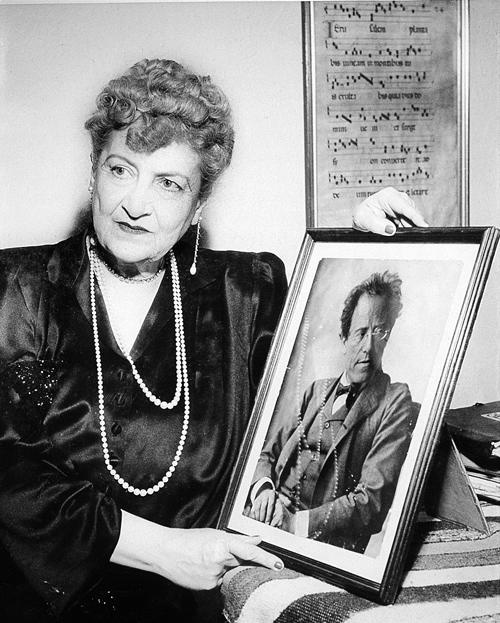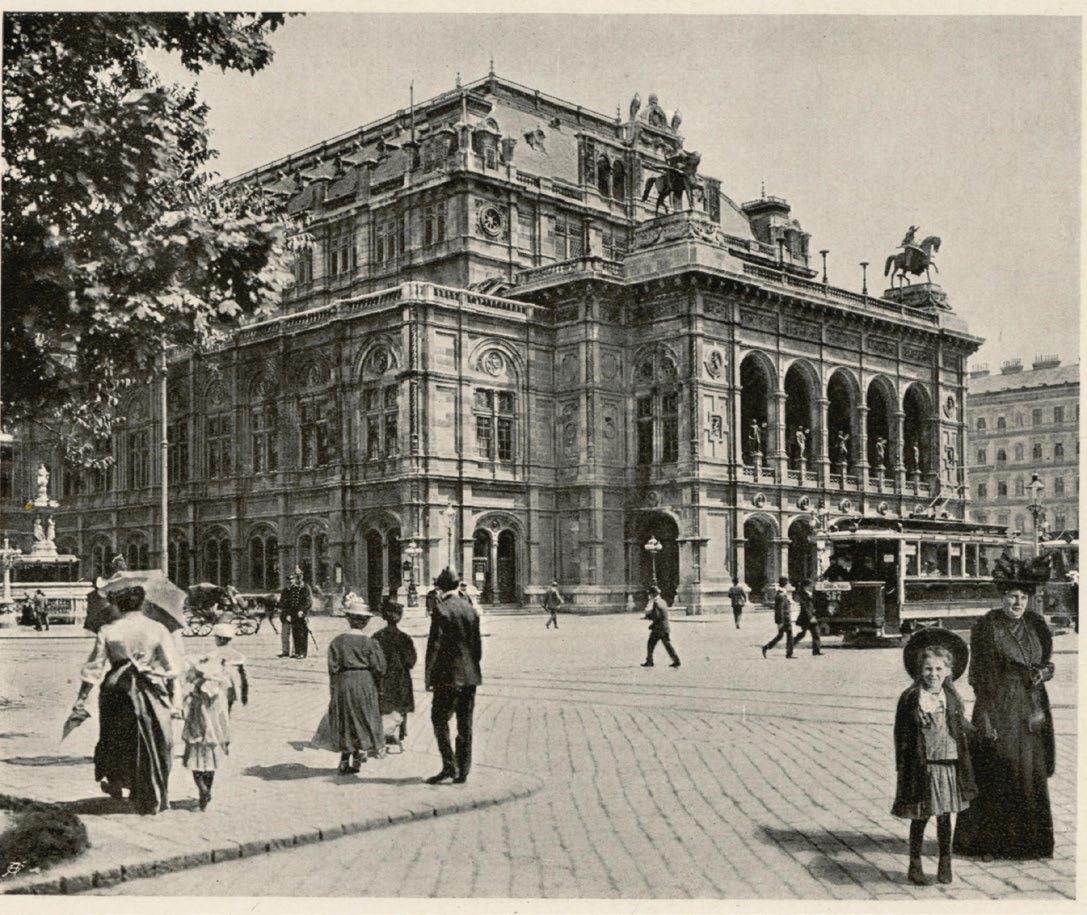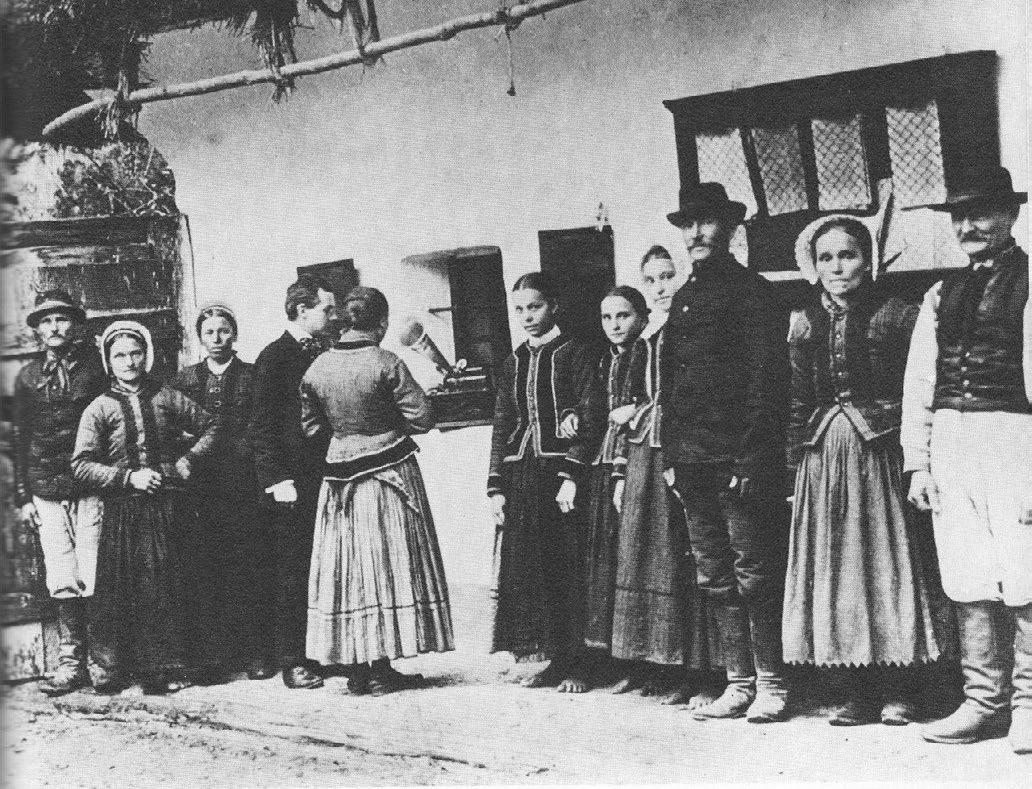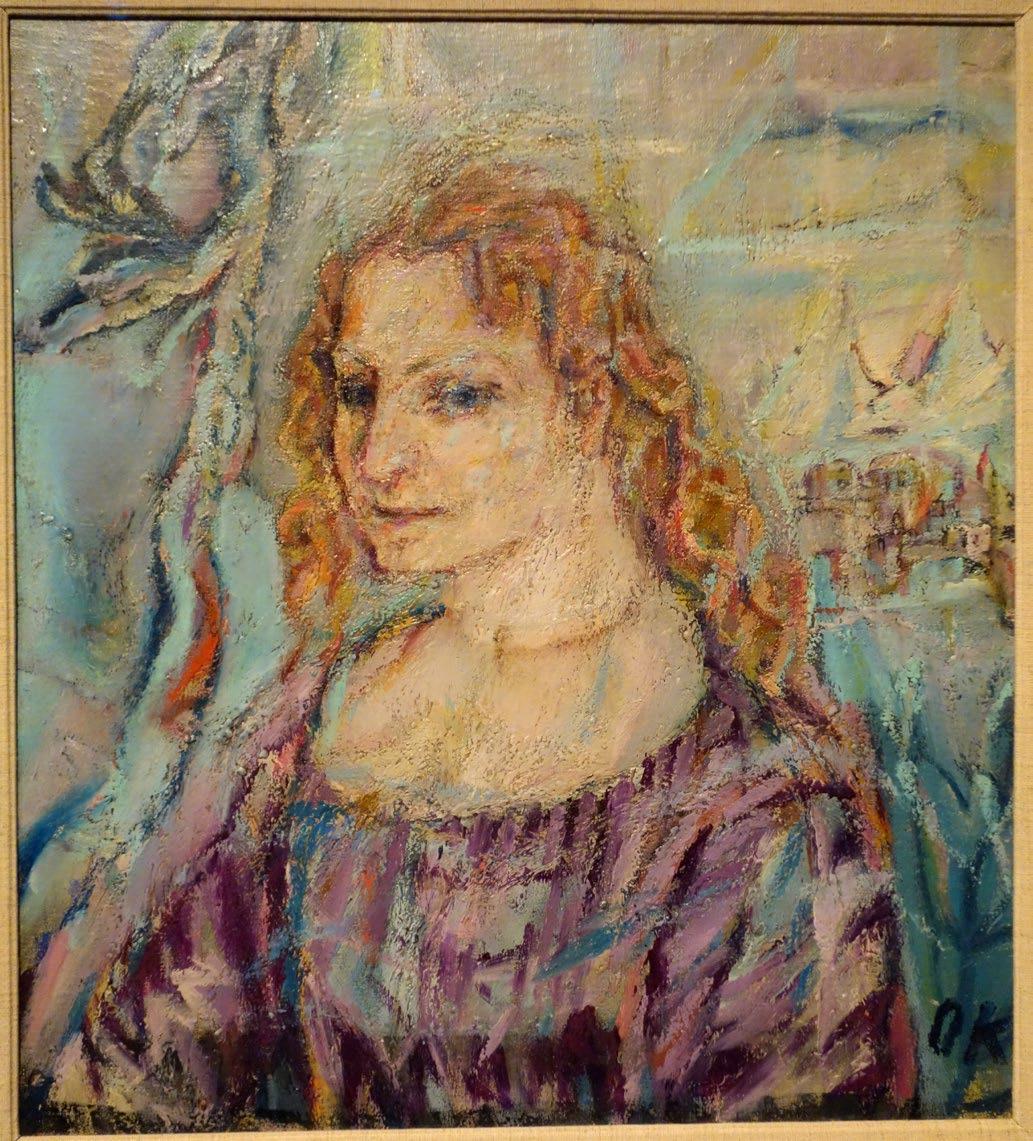
5 minute read
MODERNIST MUSES & CULTURAL EXPRESSIONISM: A CENTURY OF GLOBAL EVOLUTION
and greatly influencing all the artists that followed. Many of the artist contemporaries of La Belle Époque were colleagues and even close friends, cultivating creative collaboration, innovations, and influencing each other’s work.
The world, and Vienna in particular, was also recovering from the economic crash of 1873, and tending toward nostalgic conservatism. In the twenty years to the turn of the century, Vienna saw a creative reinvention as artists pushed against old ways to forge new depictions of life. Expressionism came to describe this artistic movement, which was defined by an individual’s subjective perspective. Soon Vienna was heralded as a cultural center with painters, poets, composers, philosophers, fashion designers, architects, and writers convening in salons, and producing new works that were influenced by one another. Alma and Bartók both were influenced by what preceded them, as well as helped shape and were shaped by the movements that emerged during their lifetimes.
Advertisement
Alma Mahler and Béla Bartók lived through their
Their early lives were influenced by trends and styles that tended toward nostalgia for past grandeur, the end of the time period known in Europe as La Belle Époque. This period, 1871-1914, was full of optimism, economic prosperity, and scientific innovations, and considered Paris as it’s center. La Belle Époque is characterized by the prolific artistic expression that flourished throughout Europe. Many works of music, theater, dance, literature, visual arts, and poetry created during this time are considered masterpieces, becoming staples in the classical canon,

Expressionism
lived within a larger movement happening across the world known as Modernism, which encompassed new cultural ideas that were emerging with increased technology, urbanization, and globalization. Among many of the movements and initiatives within the Modernist period, it also encompasses some of the earliest work that artists, activists, philosophers, and writers were doing to begin to decolonize parts of Africa and Asia that were colonized by Western Europe.
Alma Mahler was at the center of this all her life, as a smart, charismatic beauty, whose father was a famous painter. She met Gustav Klimt as a teen, beginning her first of many love affairs with artists. She later had a passionate affair with young Expressionist painter, Oskar Kokoschka, who was one of the prominent contemporary Viennese artists of the time.

Alma was tutored in composition by Alexander Zemlinsky, with whom she also had a romantic relationship. Since most of Alma’s compositions were written before she married Gustav Mahler, she was most likely influenced by his contemporaries, in particular Johannes Brahms, Franz Liszt, and Richard Strauss—composers who also greatly influenced Béla Bartók. Alma also admired Richard Wagner’s work, his operas in particular. And of course, since Gustav Mahler helped Alma publish some of her compositions, he too influenced her work. Four Songs was published in 1915 even as the first two were written in 1901, when Alma was 22, and the second two songs a decade later. Her compositional style, though unique to her, is also a product of her time, fitting within the compositional landscape of her contemporaries, with similarities to Strauss’ later work and Schoenberg’s earlycareer compositions.
Bartók’s piano teacher was a former student of Franz Liszt
(who was friends with Richard Wagner, Frédéric Chopin, Hector Berlioz, Robert Schumann, Clara Schumann, Camille Saint-Saëns, and Edvard Grieg, among others).
In school, Bartók became close friends and colleagues with Zoltán Kodály who introduced Bartók to the music of Claude Debussy. Kodály nurtured and grew Bartók’s early passion for and fascination with folk music traditions. Together as ethnomusicologists, much of their career included traveling to small communities across the AustriaHungarian Empire to listen to, transcribe, and later even record folk music from different areas of the countryside. Bartók’s composition style bridges late Romantic and emerging Expressionist characteristics with elements of Central European folk music traditions and techniques, including the use of the pentatonic scale and syncopated dance rhythms.


As Expressionism emerged in Germany at the turn of the 20th century, and spread across the Austria-Hungarian Empire, visual artists including Oskar Kokoschka turned inward to subjectivity and the subconscious, creating distorted images with colors and brush strokes that represented emotions rather than a realistic depiction of the world around them. The movement stemmed from widespread anxieties, spurred by increased urbanization and The Great War. Artists, composers, choreographers, film-makers, and poets alike were also influenced by the emerging psychological work of Sigmund Freud’s investigation into the mind’s subconscious.

Alexander Zemlinsky and Gustav Mahler were also acquainted with Arnold Schoenberg who founded the Second Viennese School; a group of composers who were innovating the art of composition expanding it from the late-Romanticism style and pushing boundaries to explore atonality. Their compositional techniques and style — characterized by dissonance, extreme dynamics, and deconstructed melody — helped to define the Expressionist movement. Alma Mahler and Schoenberg maintained a friendship for the rest of their lives, even after they both emigrated to the United States.
When Bartók wrote his opera, Bluebeard’s Castle in 1911, he was beginning to lean into some of the dissonance that defined the Expressionist work of his contemporaries. In particular, he used the interval of a minor second as a reoccurring motif, known as the blood motif, to evoke an unsettled disquiet, foreboding, or deep sadness. In his career, Bartók’s compositions tended to stay rooted in the folk traditions he studied, even as he married these techniques with emerging ones to create new work.
Bartók was deeply heartbroken by what the war had done to his homeland and the surrounding regions where he’d conducted much of his ethnomusicological research. His work, while not atonal, did experiment with relative tonality using some of the same twelve-tone parameters that
Bauhaus in Boston
designed and built his family home in Lincoln, can still tour it today! May other buildings in
Schoenberg and the Second Viennese School invented, creating an atonal mathematically derived technique called Serialism.
Alma Mahler’s second husband, architect Walter Gropius, founded a visual art, design, and architecture movement within Modernism influenced by Expressionism called Bauhaus that also became an art school. Bauhaus was defined by the principal of unifying artistic vision, incorporating bringing all the arts together with an eye toward function as opposed to decoration. Faculty included artists Paul Klee and Wassily Kandinsky.
By the time both Alma Mahler and Béla Bartók emigrated to the United States to escape World War II, their work as composers were not what primarily defined them. Bartók’s work as pianist, educator, and ethnomusicologist predominated, even as, two years before he died, he was commissioned by Serge Koussevitzky to write Concerto for Orchestra for the Boston Symphony Orchestra—the piece that he is perhaps most well-known for today—which premiered in December 1944.
Alma and her third husband, poet Franz Werfel, settled in Los Angeles, California, and hosted salons that gathered other expatriate artists including Schoenberg, Igor Stravinsky, and writer Thomas Mann. After her husband died, Alma moved to New York City where she became friends with Leonard Bernstein. She died in 1964, just as the next cultural revolution was blooming bringing rock and roll, blues, jazz, pop art, minimalism and much more in the explosion of diverse perspectives and ideas.
Discuss:
Alma Mahler, in particular, lived through immense upheaval and change over her 84 years, yet was centered in a world of artists, creators, and innovators.
Do you think that you are living in a similar period of relatively rapid social change?
Why or why not?
What might the world be like when you are in your 80s?
Boston
Walter Gropius moved to Boston to teach at Harvard Graduate School of Design in 1937. He Lincoln, MA in 1938 that embodied the Bauhaus ideology of simplicity, economy, and aesthetic beauty—you the area including some MIT buildings were built and designed using this Bauhaus style and philosophy.

